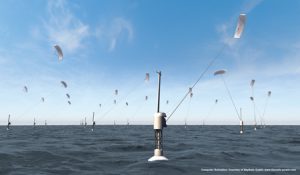Clean energy continues to grow, with renewable sources playing an ever greater role. Wind power generation, having expanded offshore, is now not only looking out but up. International renewable energy consultancy GL Garrad Hassan has issued the first market report that analyzes the burgeoning new industry of High Altitude Wind Energy (HAWE). HAWE systems are designed to tap into the high velocity, stable air currents that exist at altitudes anywhere from 200m to 20km above the earth; a source for generating cheaper and more abundant electricity than current wind technology.
The report looks at the potential of high altitude winds as an energy source, the current technologies within the sector and their potential as mature systems. As well as assessing individual technologies and the companies developing them, the report addresses the technical and regulatory challenges faced by the industry and the likelihood of its success.
As this emerging industry has grown, a cottage-like mentality with small entrepreneurs and inventors has flourished with a diverse array of systems types at various stages of development. Small and real scale prototypes from many developers are currently in active development. The report identifies 22 companies that have already developed or have announced their intention to develop prototypes including kites, kytoons and aerostats, and gliders or sailplanes with turbines or airfoils attached. In Europe and America these developers are beginning to see an influx of investment from both private and governmental partners and the report looks at the potential for investor involvement at the nascent stages of this industry.
The basis for a HAWE system is relatively simple; a tethered object flying at altitude uses a mechanical system to harness the kinetic energy from the wind. The design of the object, the extraction mechanism and the tethering system, varies considerably among the many systems in development. The system might take the form of a kite, a parachute or rotating balloon, or a fixed wing, and be tethered in parallel on a floating platform offshore. GL Garrad Hassan’s report looks at the prototypes, the potential of the major players and the challenges that need to be met for the technology to flourish.
HAWE systems have the potential to take energy generation from wind into a new dimension, unlocking resources with far greater potential energy than so far realized. With investment bringing more visibility to the industry, and the first full scale systems soon on the horizon the GL Garrad Hassan report is a valuable tool for those seeking to gain an overview of this new market segment. It can be ordered online at www.gl-garradhassan.com.



























